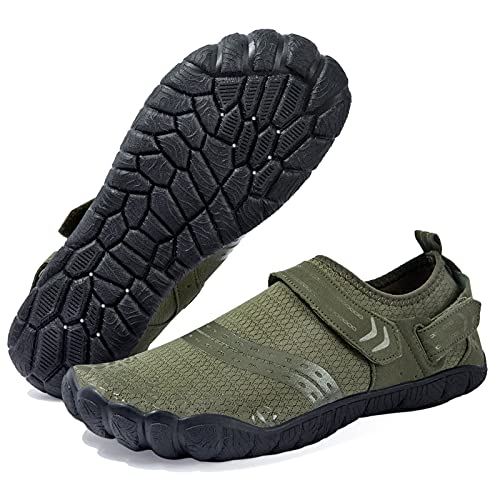Waterproof Insulated Boot Guide

When it comes to braving the elements, whether you’re hiking through wet terrain, working in cold conditions, or simply wanting to stay dry and warm during your daily commute, a good pair of waterproof insulated boots is essential. These boots are designed to keep your feet dry and warm, even in the most challenging conditions. But with so many options available, choosing the right pair can be overwhelming. In this comprehensive guide, we’ll delve into the world of waterproof insulated boots, exploring their key features, benefits, and what to look for when making your purchase.
Understanding Waterproofing and Insulation
Before diving into the specifics of waterproof insulated boots, it’s crucial to understand the two key components that make them effective: waterproofing and insulation.
Waterproofing: This refers to the boot’s ability to prevent water from entering. It’s usually achieved through the use of waterproof membranes like Gore-Tex or similar technology. These membranes allow moisture (sweat) to escape while keeping external water out, ensuring your feet stay dry.
Insulation: Insulation in boots is designed to keep your feet warm. It works by trapping warm air close to the skin and preventing cold air from penetrating. Common insulating materials include Thinsulate, PrimaLoft, and down insulation. Each has its own benefits, ranging from lightweight warmth to durability in wet conditions.
Key Features to Consider
When selecting waterproof insulated boots, several features should be considered to ensure you find the right pair for your needs.
Activity Level: Consider what you’ll be using the boots for. Different activities require different levels of support, flexibility, and insulation. For example, hiking boots need to be more supportive and durable than boots for casual walking.
Climate and Conditions: The environment in which you’ll be wearing the boots is crucial. For colder, wetter conditions, you’ll want boots with high insulation and a reliable waterproof membrane. In warmer conditions, breathability becomes more important to prevent overheating.
Durability: Look for boots made with high-quality materials that can withstand the conditions you’ll be in. This includes the outsole (for grip and durability), the midsole (for cushioning), and the upper material (for waterproofing and overall durability).
Comfort and Fit: Ensure the boots fit comfortably. A good fit prevents blisters and ensures that the boot functions as intended. Look for features like a comfortable toe box, a secure heel fit, and adjustable lacing.
Weight: Lighter boots can be more comfortable for long hikes or extended wear, but may sacrifice some warmth or durability. Heavier boots might be warmer and more durable but could be tiring to wear.
Types of Waterproof Insulated Boots
There are several types of waterproof insulated boots tailored to different needs and preferences.
Hiking Boots: Designed for rugged terrain, these boots offer high ankle support, deep treads for traction, and are often both waterproof and insulated.
Winter Boots: Focused on warmth and dryness in snowy and icy conditions. They often have a higher insulation rating and may include additional features like thermal insoles.
Work Boots: For those working in wet or cold conditions. They combine durability and protection (e.g., steel toes) with waterproofing and insulation.
Casual Waterproof Boots: For everyday wear in wet conditions. They balance style with functionality, offering waterproofing and some level of insulation without the bulk of more rugged boots.
Practical Applications and Scenarios
Understanding how waterproof insulated boots perform in real-world scenarios is crucial. For instance, in wet and cold conditions, the right boots can mean the difference between a comfortable, safe experience and one marred by cold feet and potential health risks. Whether you’re a professional requiring durable work boots or an outdoor enthusiast seeking reliable hiking boots, the practical application of your chosen boots will significantly impact their value and usefulness.
Decision Framework
To make an informed decision, consider the following steps:
- Identify Your Needs: Determine the primary use of the boots and the conditions you’ll encounter.
- Research Brands and Models: Look into brands known for quality waterproof insulated boots and read reviews of specific models that fit your needs.
- Compare Features: Once you have a list of potential boots, compare their features, including waterproofing technology, insulation type, weight, and durability.
- Try Them On: If possible, try on boots before buying to ensure a comfortable fit.
- Check the Warranty and Maintenance: A good warranty can provide peace of mind, and understanding how to maintain your boots can extend their lifespan.
FAQ Section
What is the best insulation for waterproof boots?
+The best insulation depends on your activity level and the conditions you'll be in. Thinsulate and PrimaLoft are popular choices for their warmth, lightweight feel, and performance in wet conditions.
How do I maintain waterproof boots?
+Regularly clean your boots with a damp cloth, and apply a waterproofing treatment as recommended by the manufacturer. Avoid using harsh chemicals or exposing your boots to extreme temperatures.
Are all waterproof boots also insulated?
+No, not all waterproof boots are insulated. Waterproofing refers to the boot's ability to keep water out, while insulation refers to its ability to keep warmth in. While many boots combine both features, some may prioritize one over the other based on their intended use.
In conclusion, choosing the right waterproof insulated boots involves understanding your specific needs, considering the key features that will meet those needs, and researching to find the best fit. Whether you’re facing harsh outdoor conditions or just want to stay dry and warm in your daily life, the right pair of boots can make all the difference. By following this guide, you’ll be well on your way to finding the perfect waterproof insulated boots for your next adventure or everyday wear.


